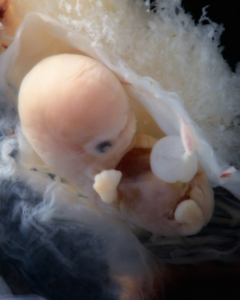In Honour of the Littlest Life Lost, Baby Beaton:
23rd Victim of the Tragedy in Nova Scotia, April 18th & 19th, 2020
The Saint John Chapter held its AGM in June and the recent Nova Scotia tragedy was discussed, with the reality that there were 23 victims – a fact most media did not recognize. The tiniest victim was the unborn baby of Nick and Kristen Beaton (Baby Beaton’s life was taken along with mom’s). It was decided that the Chapter would make a financial gift of $100, along with additional donations from Chapter members, in memory of Kristen and her unborn baby. On July 28th, Owen Boyle and Helen LeBlanc from the Saint John Chapter, had the honour to drive to Portapique, Nova Scotia, to meet with several people from the community. They left the cheque for $520, along with a Paw Patrol Fire Truck, with Clair P., a resident and business owner in the area, who delivered them to Nick Beaton and his toddler son Dax.
While Helen and Owen were unable to meet Nick personally, they had a very moving conversation with him on the phone. He was incredibly grateful for the support and said his son Dax would really enjoy the gift because he loves both Paw Patrol and fire trucks. Helen and Owen were both moved by how peaceful and beautiful the area was, despite the senseless tragedy that had occurred there. They offered prayers of healing for this deeply wounded place; for the 23 victims, their families and the community. Thank you to all who supported this initiative to recognize the Littlest Life Lost, and to be a Spark of Life to the family and community. The Saint John Chapter also had a Memorial Plaque made to honour the lives of mom and Baby Beaton; it will be delivered to Mr. Beaton and his family later this year.

